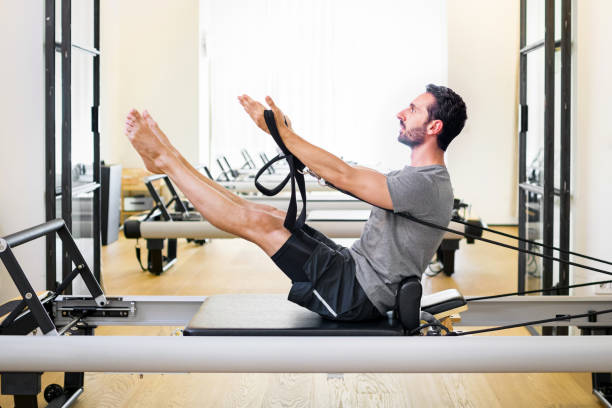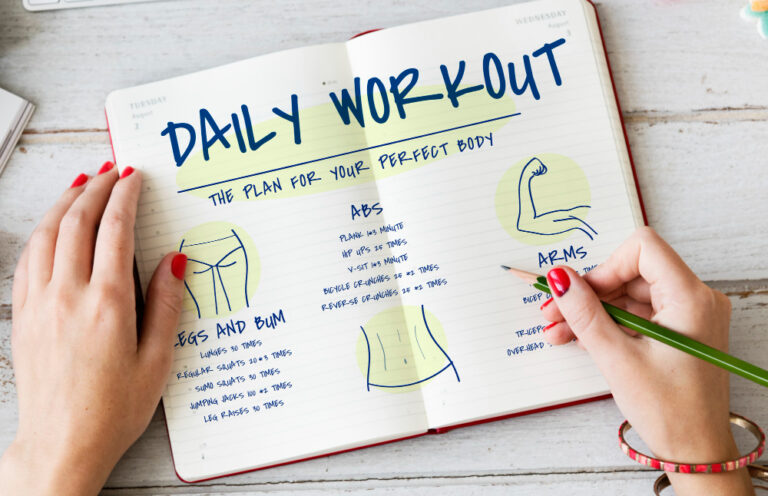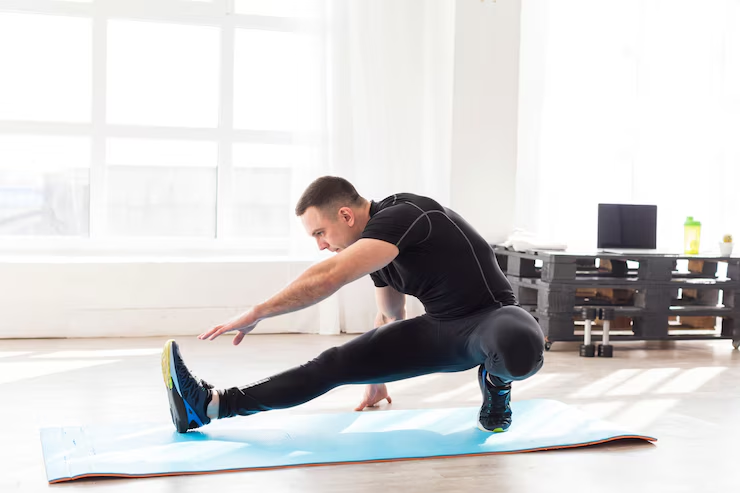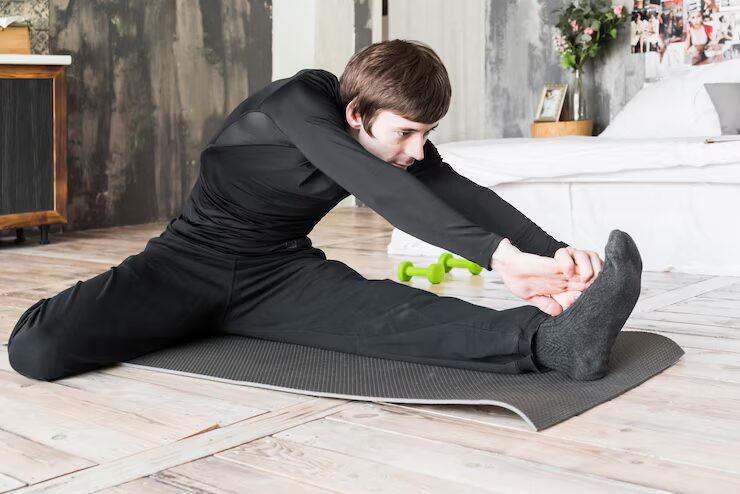Yes, Pilates is a low-impact exercise system designed to improve flexibility, strength, and posture. Founded by Joseph Pilates in the early 20th century, Pilates has evolved to become one of the most effective workout techniques for rehabilitation and injury prevention. Through its focus on controlled movements, Pilates helps to balance the body’s muscular system, which can be particularly helpful in recovery situations.
10 Fundamental Reasons Why Pilates is Perfect for Recovery At Home
1. Low-Impact, Joint-Friendly Movements
Pilates emphasizes controlled, low-impact exercises that are gentle on the joints and spine. This makes it an excellent choice for those with sensitive areas or chronic pain, reducing the risk of further injury while promoting healing.
2. Core Strength and Stability
A strong core is essential for supporting the entire body. Pilates focuses on deep core muscles, providing stability and reducing stress on injured areas. This focus on core strength is a key aspect of rehabilitation programs.
3. Improved Flexibility and Mobility
Pilates exercises promote flexibility and increase range of motion, both of which are crucial for recovery. This is especially beneficial for those dealing with back pain or joint stiffness, helping them regain mobility over time.
4. Enhanced Posture and Alignment
Through controlled movements and stretches, Pilates helps improve posture and alignment. Proper posture is essential in the recovery process, preventing further strain on the body and aiding in long-term healing.
5. Pain Reduction and Management
Research shows that Pilates can help alleviate various types of pain, particularly back and hip pain. Regular practice may provide long-term pain relief and help manage discomfort during recovery.
6. Mind-Body Connection for Healing
Pilates encourages deep concentration and body awareness, enhancing the mind-body connection. This approach contributes to both mental and physical healing, reducing stress and fostering emotional well-being, which are vital in any rehabilitation process.
7. Adaptability to Individual Needs
Pilates can be customized to suit specific recovery needs. Whether you are recovering from surgery or dealing with chronic pain, Pilates can be tailored to your condition, ensuring a safe and effective rehabilitation process.
8. Complementary to Traditional Therapies
Pilates can complement traditional physical therapy, adding additional methods for healing. It provides a well-rounded approach to recovery, often integrated into personalized rehab plans by healthcare professionals.
9. Support for Chronic Conditions
Pilates offers a holistic approach that addresses not just physical recovery, but also emotional and mental well-being. It’s particularly helpful for individuals with chronic conditions, providing a comprehensive, supportive rehabilitation routine.
10. Accessibility and Convenience at Home
One of the most significant advantages of Pilates is that it can be done at home with minimal equipment. This makes it easily accessible for those recovering from injury, allowing you to incorporate it into your daily routine without leaving home.
The Science Behind Pilates and Injury Recovery
Pilates, a low-impact exercise system, is particularly beneficial for injury recovery, making it an excellent choice for home fitness. It focuses on strengthening the core, improving flexibility, and enhancing joint stability.
According to the American Council on Exercise, Pilates boosts muscle endurance and fosters balanced movement patterns, which helps reduce strain on areas that may have been injured, such as the back or shoulders.
The controlled movements, including pelvic tilts and leg circles, enhance blood flow, which supports tissue repair, as emphasized by the Mayo Clinic. These exercises also focus on proper alignment, minimizing unnecessary stress on the joints, which is essential for recovering from sprains or chronic pain.
For home workouts, Pilates is both practical and efficient, requiring minimal equipment, just a yoga mat or a resistance band, and you’re good to go. This makes it a great option for those pursuing 2025 fitness goals without needing a lot of space or expensive gear.
The National Institute of Arthritis and Musculoskeletal and Skin Diseases notes that even a short, 15-minute daily Pilates routine can improve posture and mobility. To further support recovery, consider pairing Pilates with anti-inflammatory foods like salmon or turmeric. Additionally, incorporating recovery tools, such as foam rollers, can offer a holistic approach to healing, ensuring steady, safe progress in your home workout routine.
What to Expect in Your Pilates Recovery Journey
Embarking on a Pilates journey for injury recovery at home can be a transformative experience, offering a safe and effective path to rebuild strength, flexibility, and mobility. Whether you’re recovering from a sprain, chronic back pain, or post-surgical stiffness, Pilates’ focus on controlled movements and core stability makes it an ideal option for home fitness enthusiasts in 2025.
According to the American Council on Exercise, consistent Pilates practice can improve muscle endurance and joint stability by up to 25%. This guide outlines what to expect over the weeks and months ahead, helping you set realistic goals, stay motivated, and integrate Pilates into your recovery routine effectively.
Week 1–2: Building a Foundation
In the first two weeks, your focus will be on establishing a solid foundation with gentle Pilates movements. Expect to engage in exercises like pelvic tilts and supine leg circles, which are designed to enhance core strength and joint mobility without causing strain.
Sessions will last around 10–15 minutes, 3–4 times a week, requiring little more than a yoga mat or towel. You may feel some mild muscle soreness as your body adapts, but if you experience sharp pain, it’s important to stop immediately and consult a healthcare professional, as recommended by the Mayo Clinic.
Progress may feel subtle at first, but you’ll likely notice slight improvements in posture and a reduction in stiffness. For additional low-impact exercises, refer to our “Daily Routines & Training” for guidance.
Week 3–6: Gaining Strength and Confidence
By weeks 3–6, you’ll begin to notice stronger muscle control and greater flexibility, especially in your core and hips, as Pilates strengthens stabilizing muscles.
Exercises such as side-lying leg lifts and seated spine twists will become part of your routine, with session lengths increasing to 20 minutes. The National Institute of Arthritis and Musculoskeletal and Skin Diseases notes that these movements can reduce joint pain by improving body alignment.
At this stage, you may experience less discomfort during everyday activities like walking or sitting. To further support your recovery, incorporate anti-inflammatory foods like berries, as suggested in our “Nutrition & Meal Plans” post.
Month 2 and Beyond: Sustained Progress
After two months of consistent Pilates practice, you may experience significant improvements in mobility and pain reduction.
Studies cited by the Arthritis Foundation indicate that some individuals report up to 20–30% less discomfort following regular Pilates sessions. You can start incorporating resistance bands for added challenge. At this stage, expect to feel stronger overall, with better balance and greater confidence in your movements.
Tips for a Successful Journey
- Start Slow: Begin with shorter, 10-minute sessions to avoid overexertion and allow your body time to adjust.
- Focus on Form: Proper form is crucial for effective recovery. Engage your core and concentrate on deep, steady breathing, as poor technique can hinder progress.
- Use Recovery Tools: Incorporate tools like foam rollers or massage guns to enhance muscle relaxation, as discussed in “Recovery & Health Aids.”
- Stay Consistent: Aim for 3–5 sessions a week to see optimal results.
- Listen to Your Body: If you experience pain beyond mild discomfort, take a break and consult a healthcare professional.
Sample 15-Minute Pilates Recovery Routine
- 0:00–3:00: Pelvic Tilts (10 reps) – Strengthens the core and promotes spinal mobility.
- 3:00–6:00: Supine Leg Circles (8 reps per leg) – Improves hip mobility and joint flexibility.
- 6:00–9:00: Seated Spine Twist (10 reps) – Enhances spinal flexibility and engages the obliques.
- 9:00–12:00: Side-Lying Leg Lifts (10 reps per side) – Stabilizes the hips and improves lateral strength.
- 12:00–15:00: Breathing and Stretching – Calms the nervous system, aiding relaxation and recovery.
By following this approach, you’ll set yourself up for steady, sustainable progress on your Pilates recovery journey, allowing you to safely rebuild strength and mobility at your own pace.
Conclusion
Embracing Pilates for injury recovery transforms your home fitness journey, offering a safe, low-impact path to rebuild strength and mobility. Our 15-minute Pilates routines, like pelvic tilts and leg circles, paired with anti-inflammatory nutrition and recovery tools, empower you to heal and thrive in 2025. Commit to 3–5 weekly sessions, track progress with apps, and pair it with our Nutrition & Meal Plans for complementary recipes.
FAQ
Is Pilates good for injury recovery at home ?
Yes, Pilates’ low-impact moves like pelvic tilts strengthen core and stabilizing muscles, aiding recovery from injuries like back pain or sprains. It’s ideal for home fitness, requiring minimal equipment like a yoga mat.
Can beginners do Pilates for recovery at home?
Absolutely, beginners can start with 10-minute Pilates routines like leg circles, focusing on gentle movements to improve mobility safely.
What equipment is needed for Pilates recovery workouts?
A yoga mat and resistance band are enough for home Pilates recovery workouts. Optional tools like foam rollers enhance relaxation—see “Recovery & Health Aids” for reviews. Minimal setup ensures accessibility.
How often should I do Pilates for injury recovery at home?
Aim for 3–5 weekly 15-minute Pilates sessions to improve strength and flexibility. Rest days aid recovery. Pair with anti-inflammatory foods from “Nutrition & Meal Plans” to boost healing in 2025.







